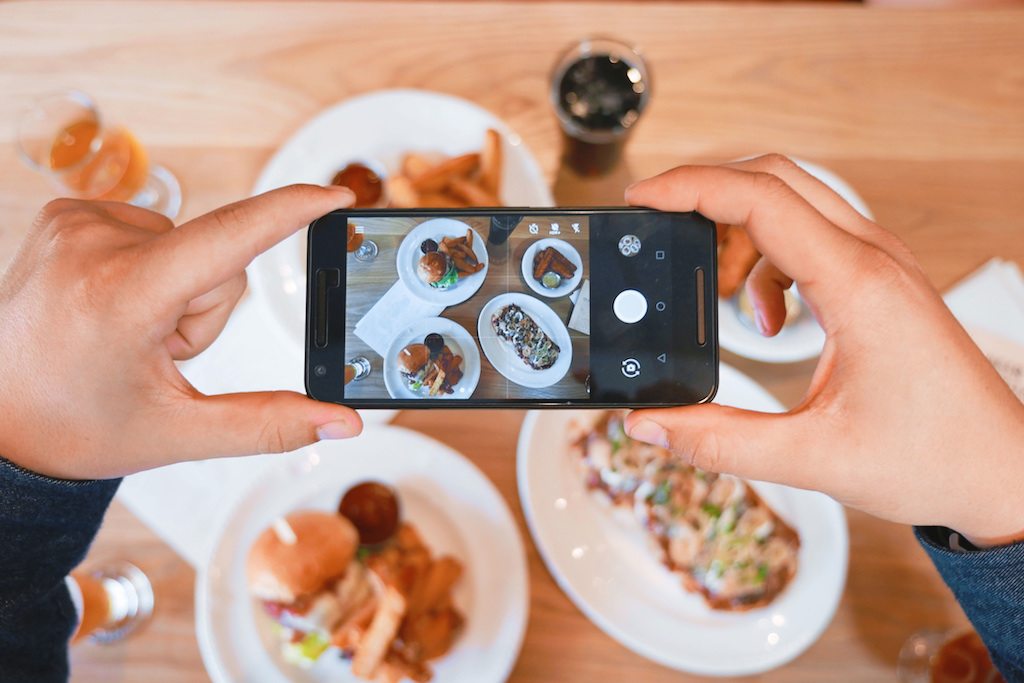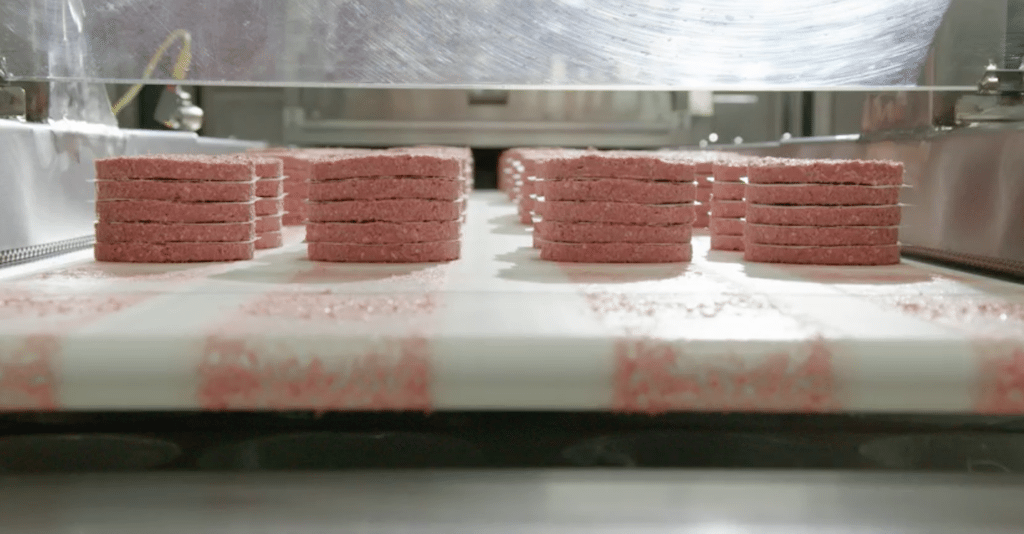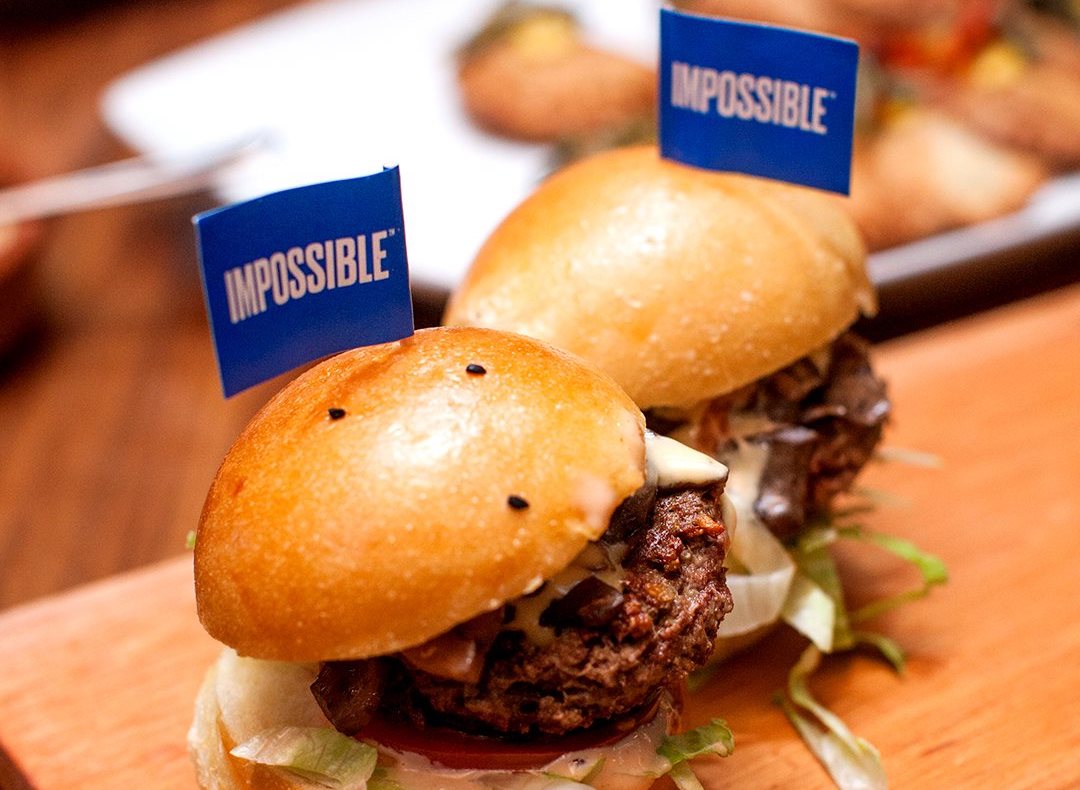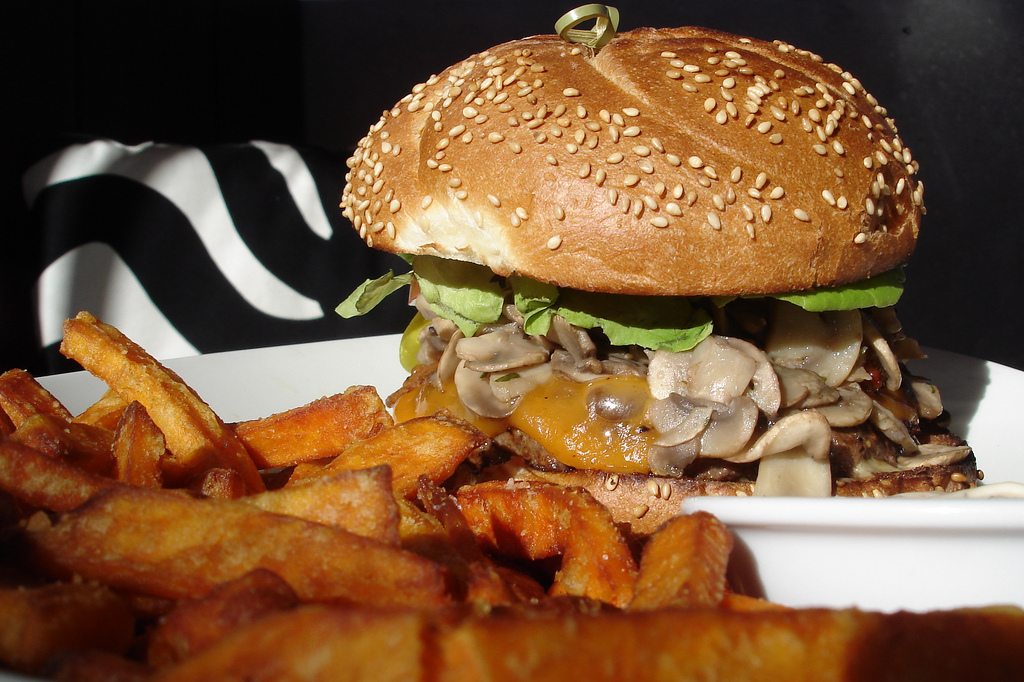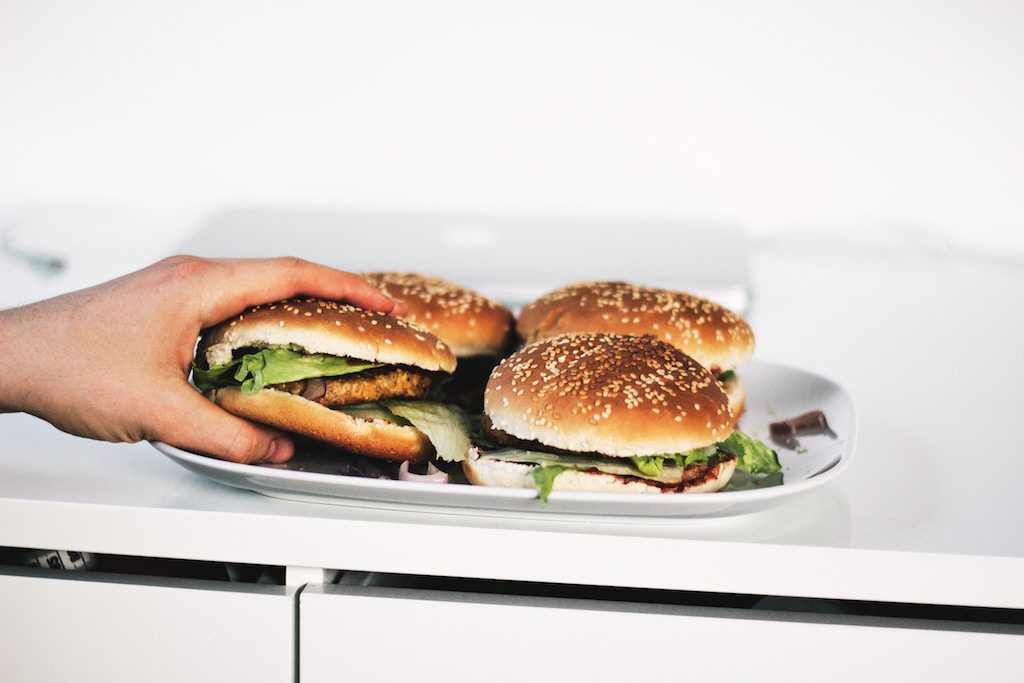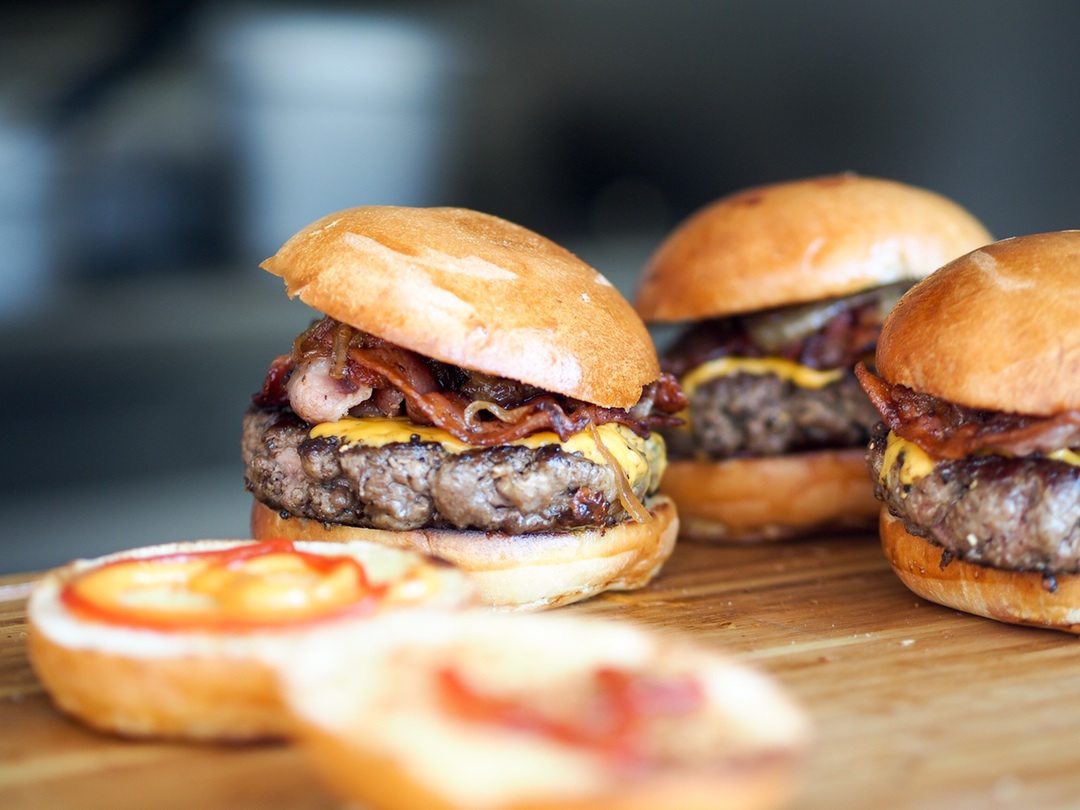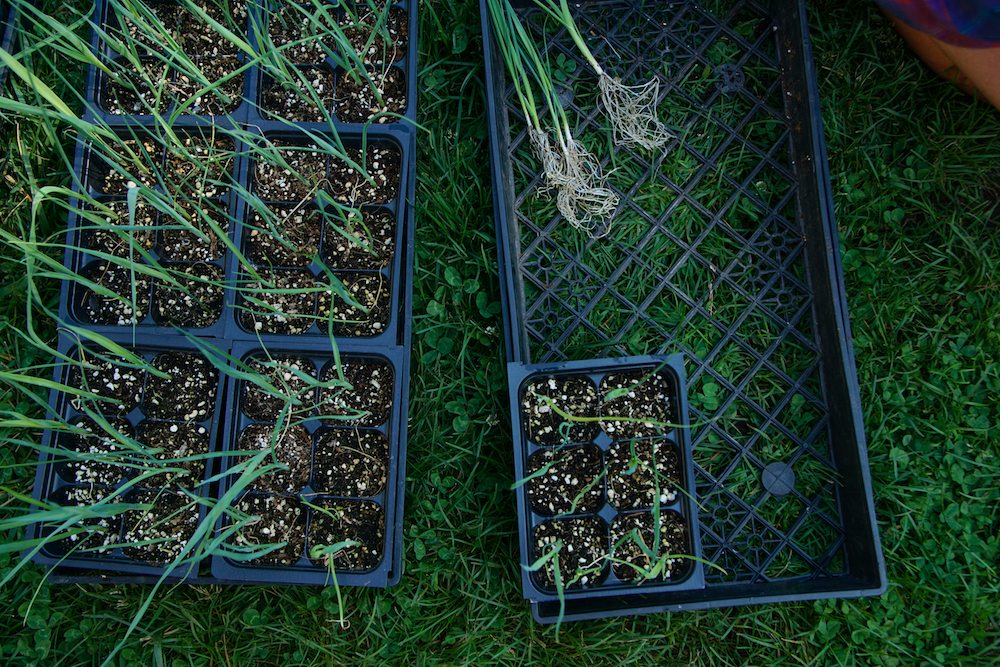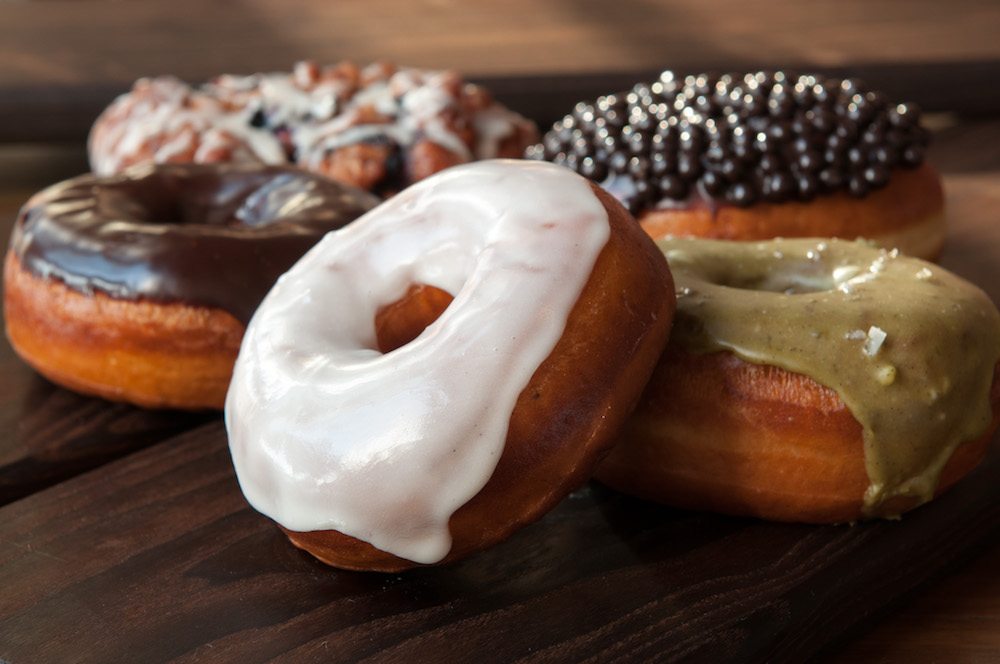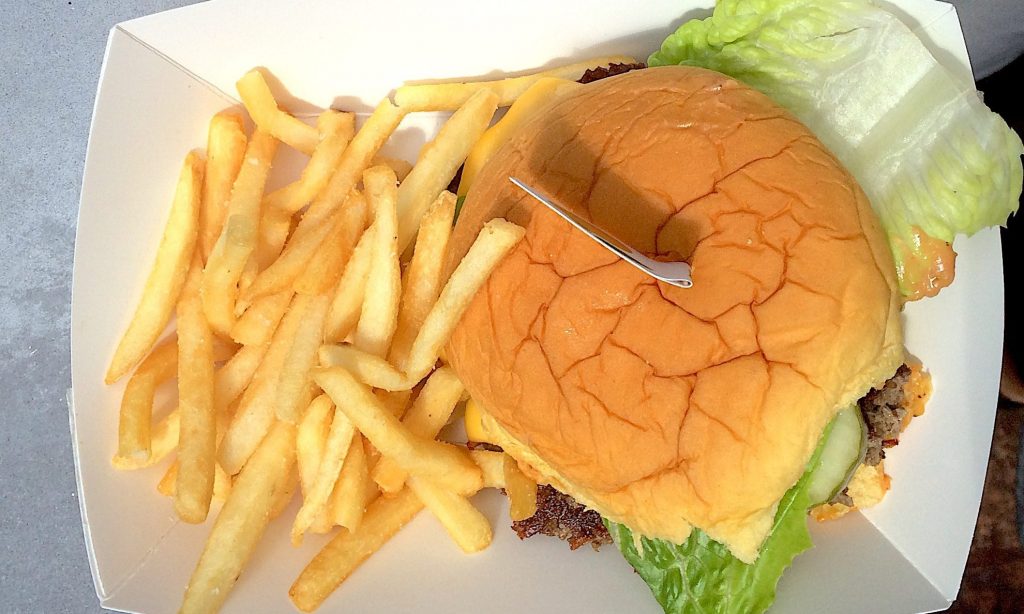
Kate Cox
Maybe it was the 11:30 a.m. arrival time. Maybe it was the setting: a daylit, atrium-esque rooftop bar atop a Koreatown hotel in Manhattan. Or maybe it was the wispy smooth jazz soundtrack and all the various camera crews in attendance. But whatever sparked the hype-y, hifalutin vibe of Tuesday morning’s Impossible Foods tasting event, it seemed to signal that something sort of impossible was about to happen.
And something that has long seemed impossible did. Yes, the endlessly-awaited (think: five years) plant-based Impossible Burger finally debuted–one day shy of its official introduction on the menu at New York City’s Momofuku Nishi restaurant.

Food scientist Harold McGee demonstrates the mixing process
Hosting the big reveal was Impossible’s founder and CEO Pat O. Brown alongside Harold McGee, author of On Food and Cooking: The Science and Lore of the Kitchen, and chef/restaurateur/TV personality/author and damn near culinary supernova, David Chang.
We’ll cut right through the fat and tell you what you want to know: Yep, it was tasty. Really, really tasty, if also (somewhat) salty under a blanket of American cheese. Yep, it’ll be (somewhat) affordable, in a big urban city restaurant kind of way, at $12 on the Nishi menu, and it will come with a side of fries. And it’s shipping to Chang’s restaurant right now. The West Coast will have to wait awhile, though—Impossible has announced a fall debut in San Francisco, but specific dates and the host restaurant have yet to be released.
We’ll get to the pretty explosive food science that makes this something more than meat mimickry in a moment, but the key thing to know is that the Impossible Burger isn’t another “plants that could philosophically pass for meat” kind of deal. Its target audience isn’t protein-starved vegetarians. Impossible has set its sights on replacing commodity beef altogether. “It’s easy to make foods with smaller environmental footprints. What’s hard is to make them delicious,” Brown told journalists on Tuesday.

David Chang fries up the plant-based patties in Manhattan on Tuesday
And with Chang on hand to demo, Brown to unveil the ingredient mix and McGee to quip, we were left wondering whether this burger could be the next Cronut or black ice cream. The Impossible Burger is not exactly never-before, and it’s hard to picture lines out the door for America’s most familiar food. But it is never-before, as in: These guys weren’t afraid to use what makes meat taste and chew like meat to make plant-based ingredients do the same. That’s a big deal.
It took a team of 80 scientists, farmers, chefs, and engineers five years and $80 million to figure out that with a few exceptions, the primary components we find in meat: water, protein, fat, amino acids and heme–a molecule found in hemoglobin–can also be used to create a meatless burger with nearly identical flavor, texture, mouthfeel, and color. It even crackles when you put it on the grill.

The Impossible burger will be served at David Chang’s Nishi in Manhattan starting July 27
The ingredients. “Everything we use is something you’d find in a restaurant kitchen,” said Brown, as he mixed a batch of burger meat from scratch while David Chang fried patties on a flat top and an honest-to-God burger smell filled the room. The demonstration was far from the futuristic test tube affair that defined the first whisperings of alternative ground beef a few years back. It was just a couple of laid back guys with mixing bowls, casually revealing a half-decade’s worth of research like they were guests on a daytime grilling special.

Ingredients include potato protein and protein gel
Of course, it’s not quite as simple as reaching into the pantry and whipping up a better burger alternative. The raw ingredients had already undergone significant transformations before the morning’s demo. Here’s a partial list:
- Water
- Protein (wheat) – This confers the critical chew and fibrous characteristic—and is the textural substrate that makes up much of the patty’s volume
- Protein (potato) – Potato protein has a gel-like quality at low temperature and is squishy, but at high temperature, becomes firm. When combined with wheat protein, it undergoes a textural transformation similar to that of raw beef
- Protein (a “flavor broth” similar to the way flavor functions in meat, which is composed of amino acids, vitamins, sugars, fats) – When cooked, it gives off a mild, savory miso-like flavor

Coconut oil, fat tissue, and soy protein help give the burgers a meaty texture
- Heme – Every cell in every plant contains heme. This is what gives the burgers the look of a freshly cut steak. Heme contributes to metallic “cooked” flavors in beef burgers, and it does the same in Impossible burgers. The team injects it in to yeast to make plant blood
- Fat – Impossible uses coconut oil, which has a mouthfeel similar to beef fat and carries flavor in the same way
- Complex carbohydrates – In meat, this is glycogen. In the Impossible Burger, there are two used for cohesion: polysaccharides (which come from Japanese yams) and Xanthan gum

“Heme,” or plant blood, is the star of the show
Footprint vs. Hoofprint. Chang being Chang, he fell for the burger on flavor alone. “We’ve used it in meat loaf and as a substitute for pork ragu—it’s one more weapon in our arsenal,” he said. “We’re all in this business to taste something new.”
But engineering the Impossible Burger was so much more than a culinary quest. “The biggest environmental crisis right now is the collision between our food system and the environmental ecosystem,” said Brown. “How can we find a way to produce food for a growing population without tremendous damage?”
Put an Impossible patty up against a beef patty, and the difference in environmental impact is hard to ignore. Eating an Impossible patty saves the equivalent of 18 miles in the car, 10 minutes in the shower, and 75 square feet of land area. If the startup is able to take advantage of economies of scale and drive prices down, those differences will scale up, too.

Plant blood
“We’re selling at a price similar to organic ground beef,” Brown said, and the eventual goal is to reach a price point that can compete with commodity beef. In today’s market that’s about $5.55 per pound, according to the Beef Price Retail Composite for 2016.
Nutritionally speaking, Impossible’s burger is on par with beef, with a few notable exceptions: it has a little more protein, zero cholesterol, and slightly more iron. Brown vague about shelf life, calling the product “perishable,” which could be a result of its relative infancy. Tomorrow marks the first time it’s ever been available for purchase, and it’s still a ways out from supermarket shelves.
After the tasting, we left thinking this: All other things being (for the most part) equal—price point, nutritional value, taste and texture—why the hell not? If it takes an $80 million, near-perfect meat replacement to win over the hearts and mouths of American eaters, and if Silicon Valley wants to bring that replacement to our doorsteps–or rather, invest in the potential of that replacement—let’s fire up the grill.


